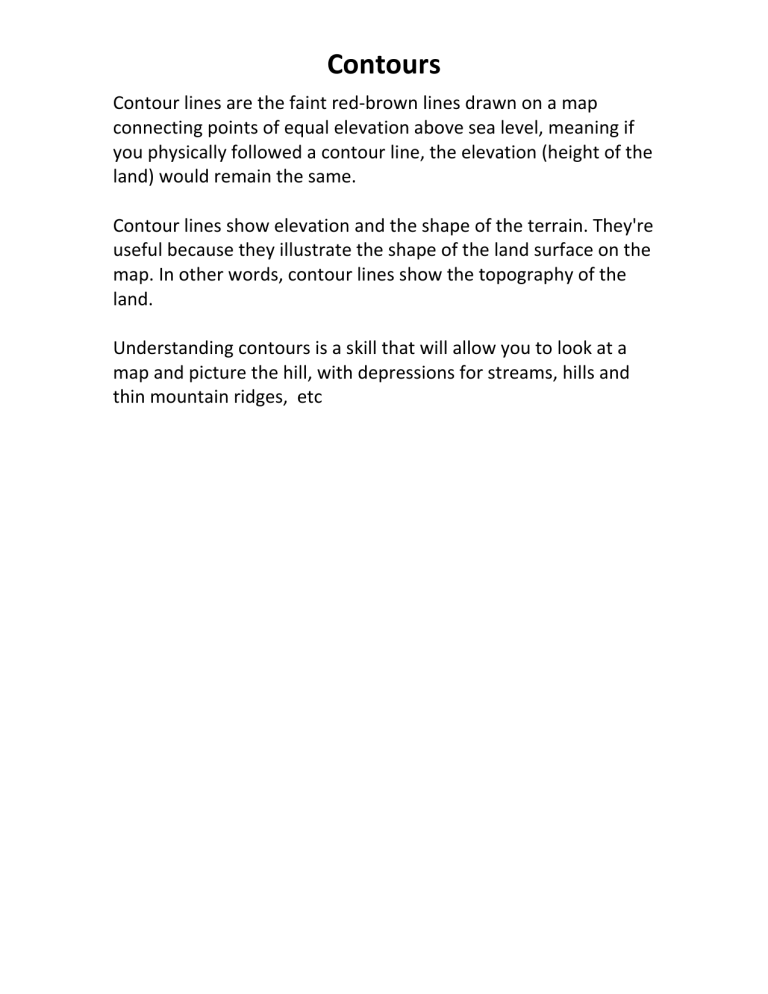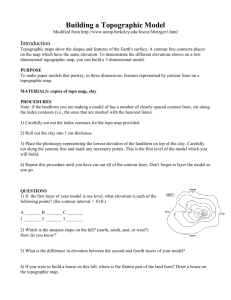
Contours Contour lines are the faint red-brown lines drawn on a map connecting points of equal elevation above sea level, meaning if you physically followed a contour line, the elevation (height of the land) would remain the same. Contour lines show elevation and the shape of the terrain. They're useful because they illustrate the shape of the land surface on the map. In other words, contour lines show the topography of the land. Understanding contours is a skill that will allow you to look at a map and picture the hill, with depressions for streams, hills and thin mountain ridges, etc Contours Contour lines are pictorial, meaning they do not exist on the ground. Contour lines are critical to understanding the elevation profile of your terrain or a particular land formation. This information can be helpful when selecting a hiking route. In addition to backpacking and hiking, countless other professions use them - land surveyors, architects foresters, engineers, miners, geologists, hunters and more. A map with contour lines on it is called a Topographic Map. Topography is the study of the geographical features of a landscape. Contours Topographic maps use a combination of colors, shading and contour lines to represent changes in elevation and terrain shape. Specifically, a topographic map represents the three-dimensional landscape of the Earth within the two-dimensional space of a map. When checking quickly a topographic map you can immediately know if a landscape is mountainous or flat. If each line represents an equal point of elevation, then any change in elevation would lead to inconsistent line spacing. For example, several contour lines spaced close together would indicate steep terrain, while lines spaced far apart would indicate a gentler slope. Shallow slope (the contours are spaced apart) Steep slope (the contours are close together) There are 3 kinds of contour lines you’ll see on a map: intermediate, index, and supplementary. Index lines are the thickest contour lines and are usually labeled with a number at one point along the line. This tells you the elevation above sea level. Intermediate lines are the thinner, more common, lines between the index lines. They usually don't have a number label. Typically one index line occurs for every five intermediate lines. Supplementary lines appear as dotted lines, indicating flatter terrain.





